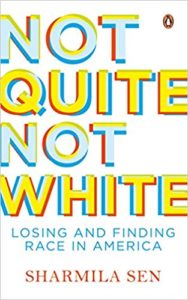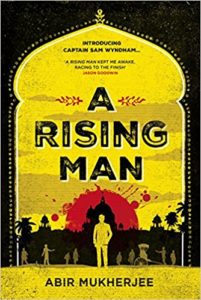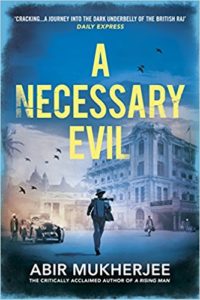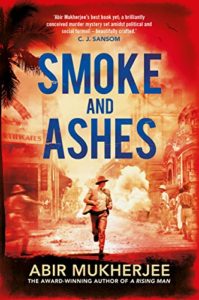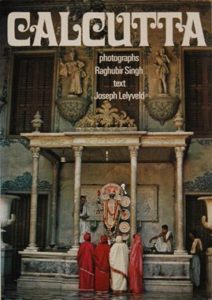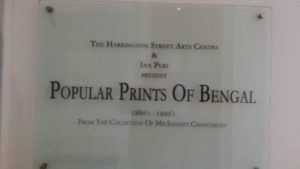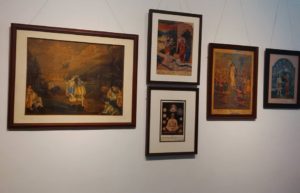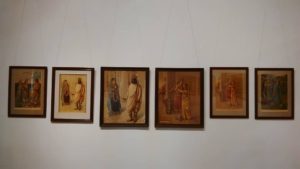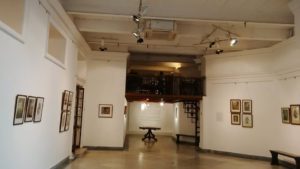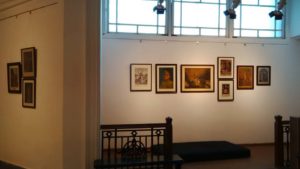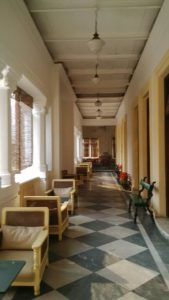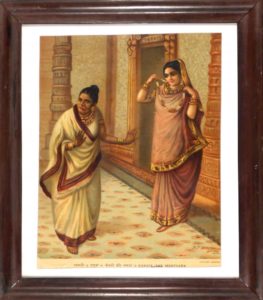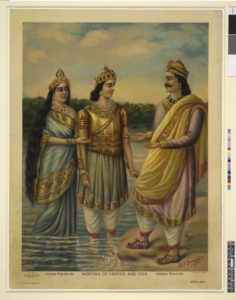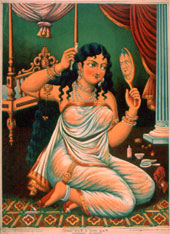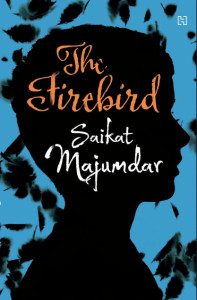Extract from “The Hungryalists: The Poets Who Sparked a Revolution”
The Hungryalists: The Poets Who Sparked a Revolution by Maitreyee Bhattacharjee Chowdhury is an interesting tribute to a short lived but intense literary movement in West Bengal that has left an lasting impact around the world. Their well documented relationship with the Beats poet is also analysed in The Hungryalists. This book will become one of the go-to reads on The Hungryalists precisely for the very reason that little documentation of the movement exists in English as these poets mostly wrote in Bengali. So to transcend languages and cultures requires a bridging language which is English.
The Hungryalist or the hungry generation movement was a literary movement in Bengali that was launched in 1961, by a group of young Bengali poets. It was spearheaded by the famous Hungryalist quartet — Malay Roychoudhury, Samir Roychoudhury, Shakti Chattopadhyay and Debi Roy. They had coined Hungryalism from the word ‘Hungry’ used by Geoffrey Chaucer in his poetic line “in the sowre hungry tyme”. The central theme of the movement was Oswald Spengler’s idea of History, that an ailing culture feeds on cultural elements brought from outside. These writers felt that Bengali culture had reached its zenith and was now living on alien food. . . . The movement was joined by other young poets like Utpal Kumar Basu, Binoy Majumdar, Sandipan Chattopadhyay, Basudeb Dasgupta, Falguni Roy, Tridib Mitra and many more. Their poetry spoke the displaced people and also contained huge resentment towards the government as well as profanity. … On September 2, 1964, arrest warrants were issued against 11 of the Hungry poets. The charges included obscenity in literature and subversive conspiracy against the state. The court case went on for years, which drew attention worldwide. Poets like Octavio Paz, Ernesto Cardenal and Beat poets like Allen Ginsberg visited Malay Roychoudhury. The Hungryalist movement also influenced Hindi, Marathi, Assamese, Telugu & Urdu literature. ( “The Hungryalist Movement: When People Took Their Fight Against The Government” Md Imtiaz, The Logical Indian, 29 June 2016)
*****
With the permission of the publisher here are two short extracts from the book:
Like everywhere else, the shadow of caste hung over the burning ghats as well. There were different burning sections for different castes. The Indian poets accompanying Ginsberg were usually Brahmins. Being there and smoking up was in itself an act of defiance, which normally nobody but the tantrics indulged in. Sunil, who had brought in his dead father here not too long ago, even joked about the place. Later, Ginsberg would go on to write:
I lay in my Calcutta bed, eye fixed
On the green shutters in the wall, crude
Wood that might have been windows
in your Cottage, with a rusty nail
and a ring iron at the hand
To open on heaven. A whitewashed
Wall, the murmur of sidewalk sleepers,
the burning ghat’s sick rose flaring
like matchsticks miles away, my cough
from flu and too many cigarettes,
prophet Ramakrishna banning
the bowels and desires—
War was on everyone’s mind. Ginsberg spoke extensively on what he called the ‘era of wars’. ‘There are as many different wars as the very nature of these wars,’ he had told his fellow poets. Following the death of Stalin and the Cuban Missile Crisis, an uneven calm seemed to have descended, only to be followed by skirmishes here and there. Issues of sovereignty dominated East and West Germany; the Kurds and Iraq were at loggerheads; closer home, the Tibetans were, of course, still struggling to ward off the Chinese invasion of their lands.
Without much ado, Ginsberg, along with Orlovsky and Fakir, arrived one Sunday at the Coffee House looking for Bengali poets. The cafe was abuzz with writers, editors and journalists. Each group had a different table—some had joined two or more tables and brought together different conversations on one plate. But somehow, everyone seemed to have an inchoate understanding of the business of war and what it spelled out for them in the end.
Ginsberg’s arrival was something of a coincidence, Samir mused. Contrary to what one would think was a far-fetched reality, especially in bourgeois Calcutta, a significant number of young Indian students had around that time begun applying for undergraduate courses in American colleges and universities. Times had fundamentally changed, of course. Where once an aspiring middle-class Bengali academic might have chosen to pursue his studies at either Oxford or Cambridge or some university in the Soviet Union, the new mindset now included American universities as the next lucrative biggie to venture forth into. Typically, one would hear snide remarks and private jokes about it in inner circles—about the disloyalty apparent in such choices and more. But those with aspirational values had learnt to live with it, was Malay’s understanding.
Even amid the erratic crowd and the loud voices that drowned everything in coffee, Ginsberg commanded attention. Samir had recalled to Malay:
He approached our table, where Sunil, Shakti, Utpal and I sat, with no hesitation whatsoever. There was no awkwardness in talking to people he hadn’t ever met. None of us had seen such sahibs before, with torn clothes, cheap rubber chappals and a jhola. We were quite curious. At that time, we were not aware of how well known a poet he was back in the US. But I remember his eyes—they were kind and curious. He sat there with us, braving the most suspicious of an entire cadre of wary and sceptical Bengalis, shorn of all their niceties—they were the fiercest lot of Bengali poets—but, somehow, he had managed to disarm us all. He made us listen to him and tried to genuinely learn from us whatever it was that he’d wanted to learn, or thought we had to offer. Much later, we came to know that there had been suspicions about him being a CIA agent, an accusation he was able to disprove. In the end, we just warmed up to him, even liked him. He became one of us—a fagging, crazy, city poet with no direction or end in sight.
All around the Coffee House, there were discussions on war. Would the Chinese Army march up to Calcutta? Would the Indian soldiers hold out? During one of these discussions, Ginsberg spoke with conviction: ‘People who want peace must intervene now, before it’s too late. But, no one will, I’m afraid. Let’s have debates if you will, let’s get talking. Let the Nehrus, the Maos and the Kennedys of this world come together, sit across and talk. Who are we without a debate?’
******
Very early on, the Hungryalists had announced, rather brashly, their lack of faith and what they thought of god. To them religion was an utter waste of time, and they made no bones about this. In fact, in one of their bulletins, they had openly denounced god and called organized religion nonsense. Many of the Hungryalists, with their sharp knowledge of Hindu scriptures, had been challenging temple elders on the different rituals and modes of worship. This came as a shock to many, in a country where religion was very much a part of everyday life—a matter of pride and culture even. On the other hand, Ginsberg was evidently quite taken with religion in India and sought out sadhus and holy men wherever he went in the country. While this might have been because he was in search of a guru, he seemed to be fascinated, in equal measure, by the sheer variety that religion opened for him in India—from Kali worship to Buddhism. But like the Beats, the Hungryalists came together in denouncing the politics of war, which merged with their larger world view.
*****
A tribute to the Hungryalist movement was uploaded on YouTube. It is in Bengali. Here is the film. In the comments Malay RoyChoudhury has also replied.
Maitreyee Bhattacharjee Chowdhury The Hungryalists: The Poets Who Sparked a Revolution Penguin Viking, an imprint of Penguin Random House, an imprint of Penguin Random House, India, 2018. Hb. pp. 190 Rs 599
Further Reading:
Ankan Kazi “Open Wounds: The contested legacy of the Hungry Generation” Caravan, 1 October 2018
Juliet Reynolds “Art, the Hungryalists, and the Beats” Cafe Dissensus, 16 June 2016
“A new book chronicles the radically iconoclastic movement in Bengali poetry in the 1960s” Scroll, 8 Jan 2019

